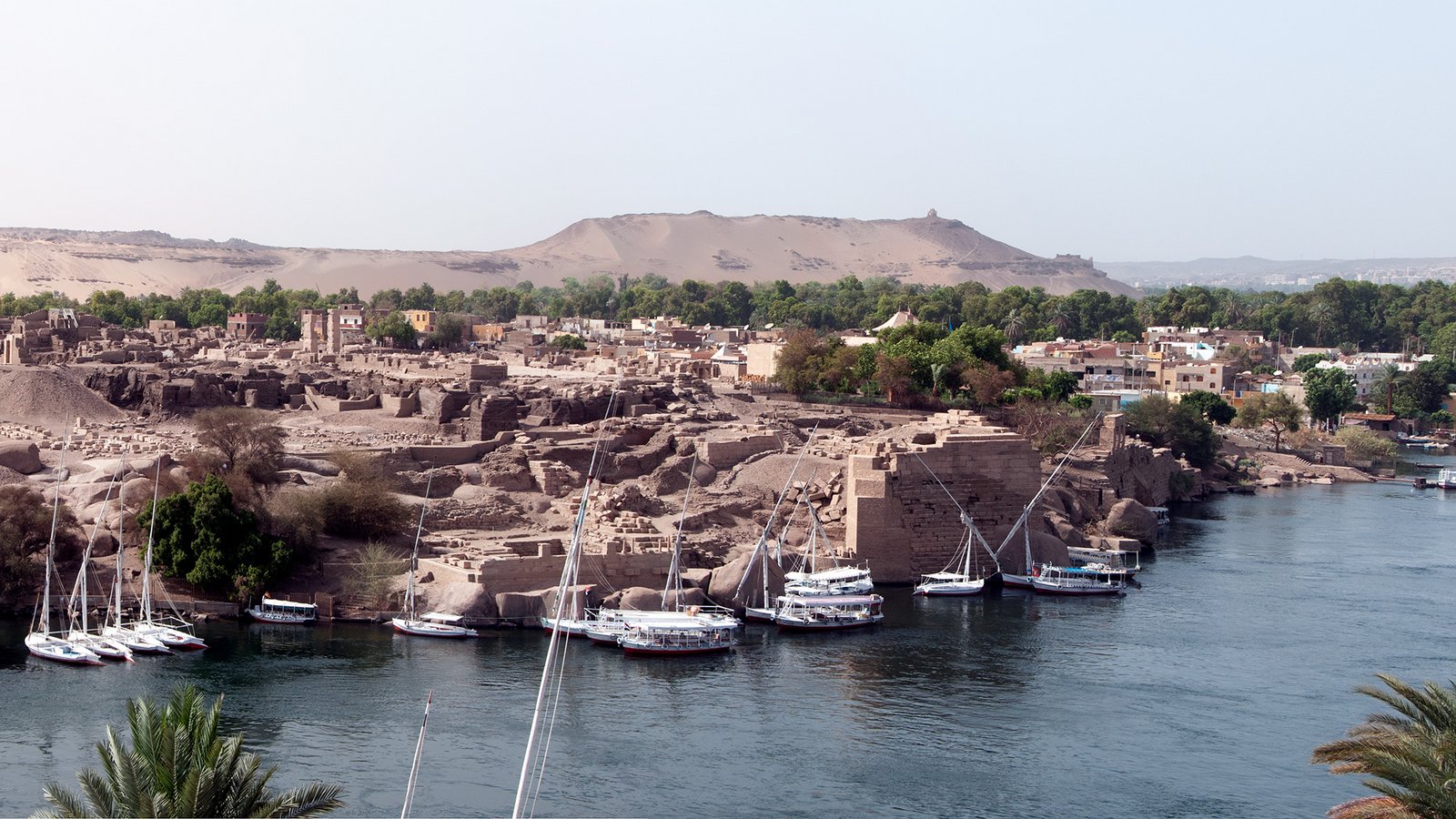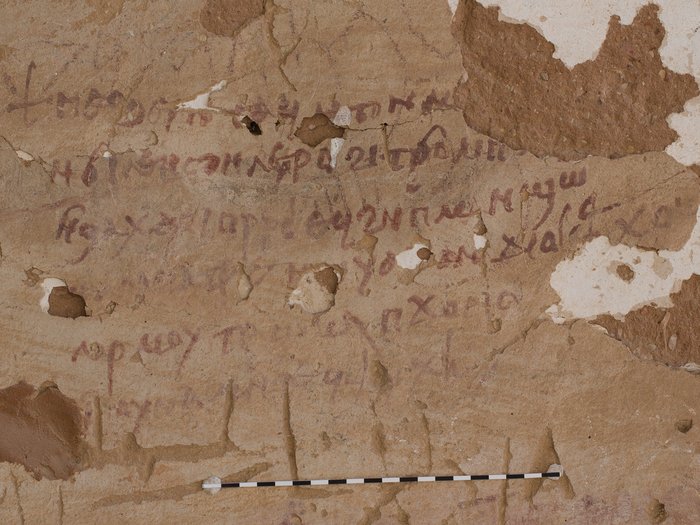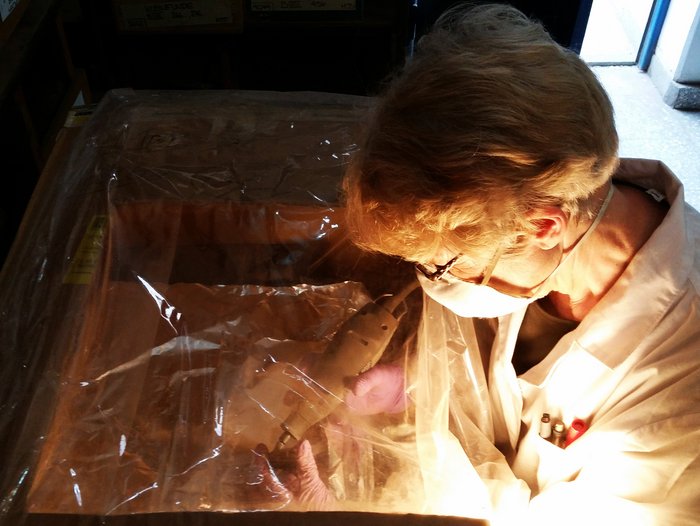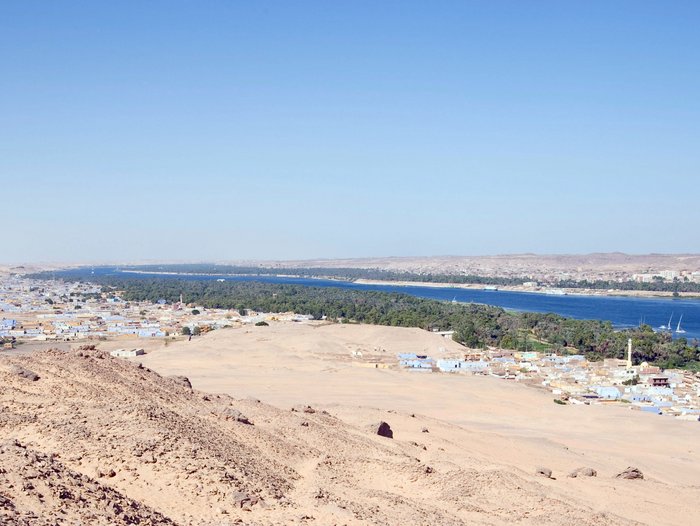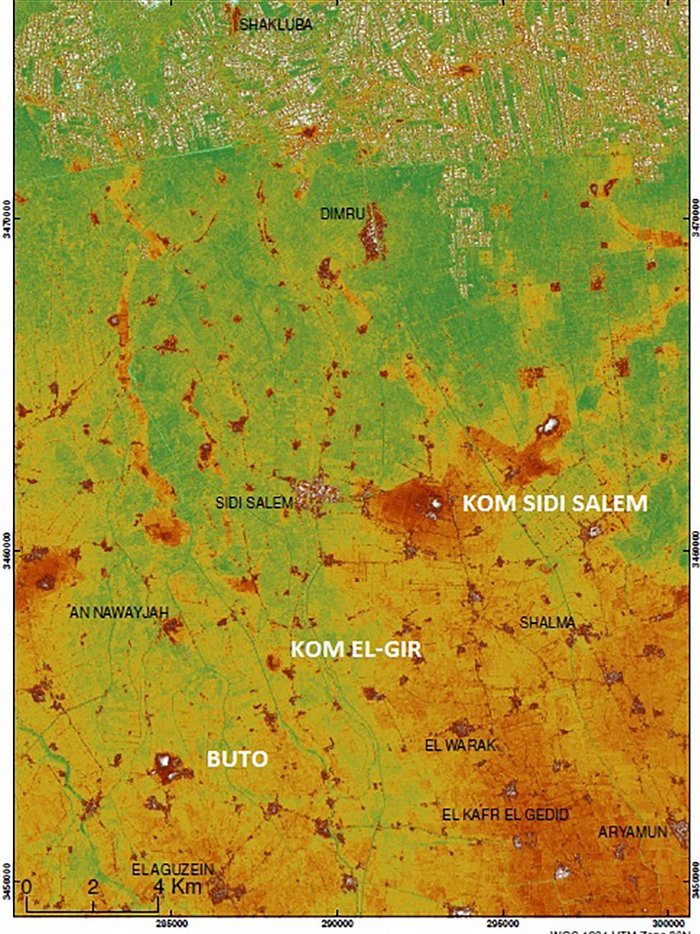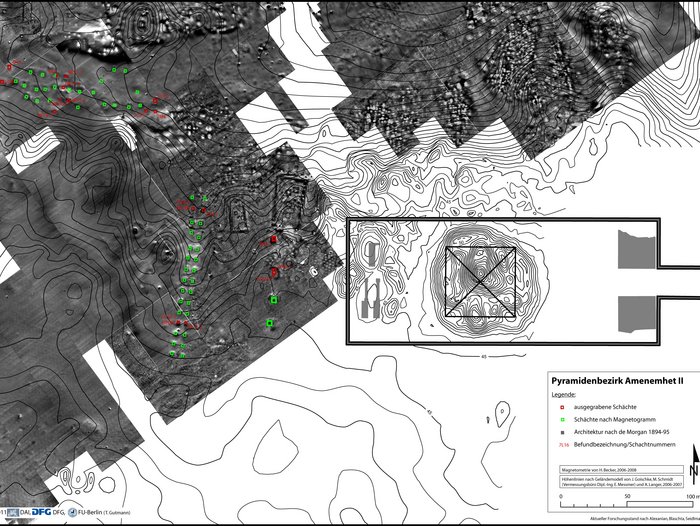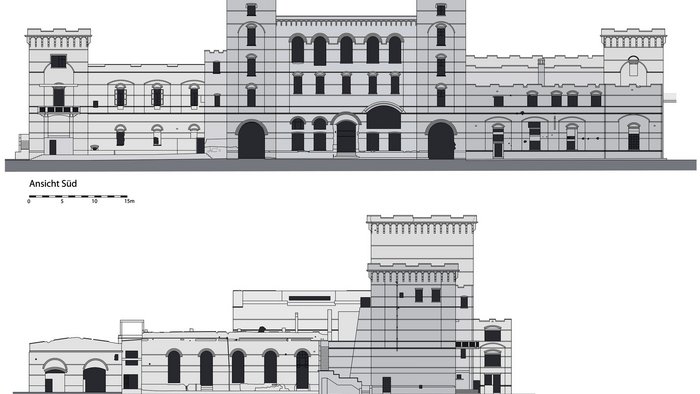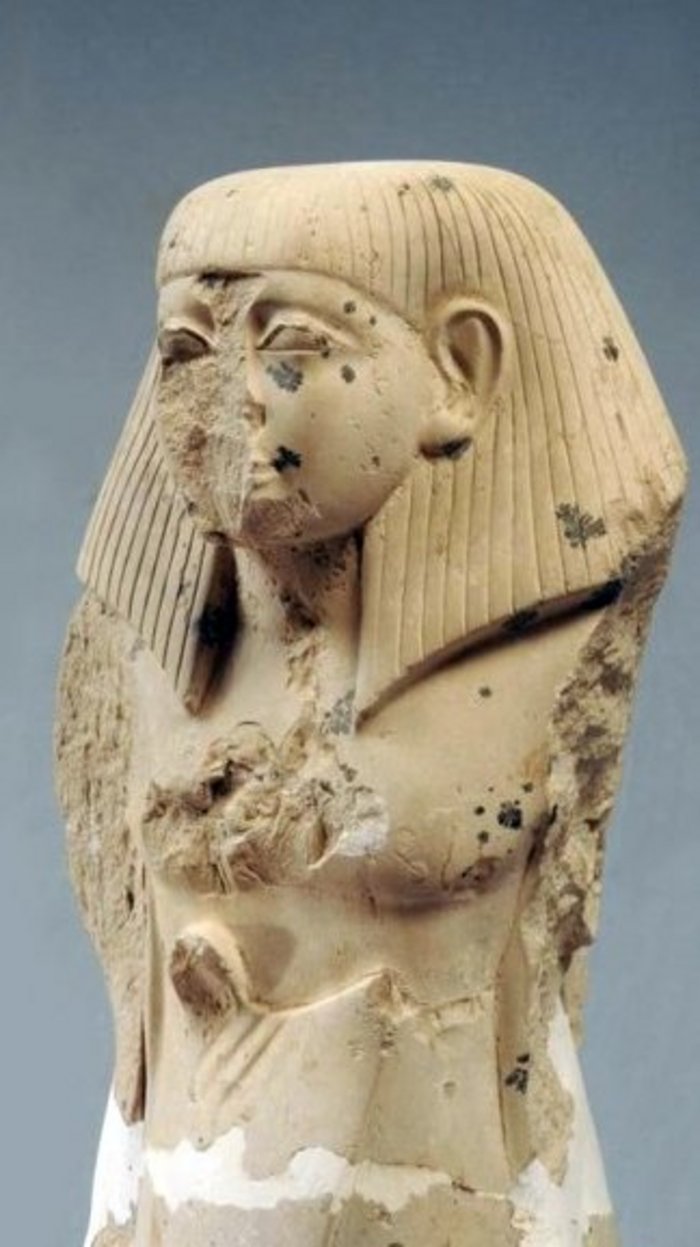Topics & Outlook
"[...] the care of all cultures whose traces are present in the monuments of Egypt [...]."
(H. Stock)
Structure and mission of the department
The Deutsches (formerly: Kaiserlich Deutsches) Institut für Ägyptische Altertumskunde, which had been inaugurated in 1907, was incorporated as Abteilung Kairo to the German Archaeological Institute.
"The institute by no means sustains exclusively the scholarly science of Ancient Egypt, but rather seeks to draw the prehistoric cultures, classical antiquity, early Christian and Byzantine art and Egypt's vast field of Islam into its realm of attention" (H. Stock). This all-encompassing historical and subject-related approach still applies today.
In terms of geography, the department's field of work began in the Egyptian Nile Valley. However, it now also comprises the deserts of the Eastern Sahara with the Libyan desert oases, the desert mountains between the Nile Valley and the Red Sea, and the Sinai Peninsula, as well.
In terms of chronology, it concerns Egypt's prehistory, its Neolithic and Chalcolithic cultures of the 5th and 4th millennia BC, through the Pharaonic, Hellenistic and Roman periods, down to late antiquity-early Byzantine and the rise of Islam to modern times. Without their testimony, crucial issues connected to sociology, economics, and geography (e.g. relating to irrigation economy and agriculture), would be impossible to adequately address, even for the periods of the distant past.
As for methodology, archaeology in the narrower sense relies on the analysis of material evidence with procedures used in fieldwork and object analysis, as typically performed in the disciplines of prehistory and in archaeology in general. This also includes the wide spectrum of methods from information technology and science. Also methods related to the study of monuments, imagery and architecture play a decisive role, especially as regards the archaeology of state societies in Egypt.
All in all, the aim is to take to the impulses from the host country and to promote the development of archaeology in Egypt through comprehensive cooperation.
Our Research Focus
The department's projects group along three main topics around key questions with paradigmatic character on Egyptian archaeology and culture history:
Auf der Südspitze der Insel Elephantine türmen sich die Schichten einer über 4000-jährigen Siedlungsgeschichte zu einem 15 m hohen Stadthügel © DAI // Peter Kopp
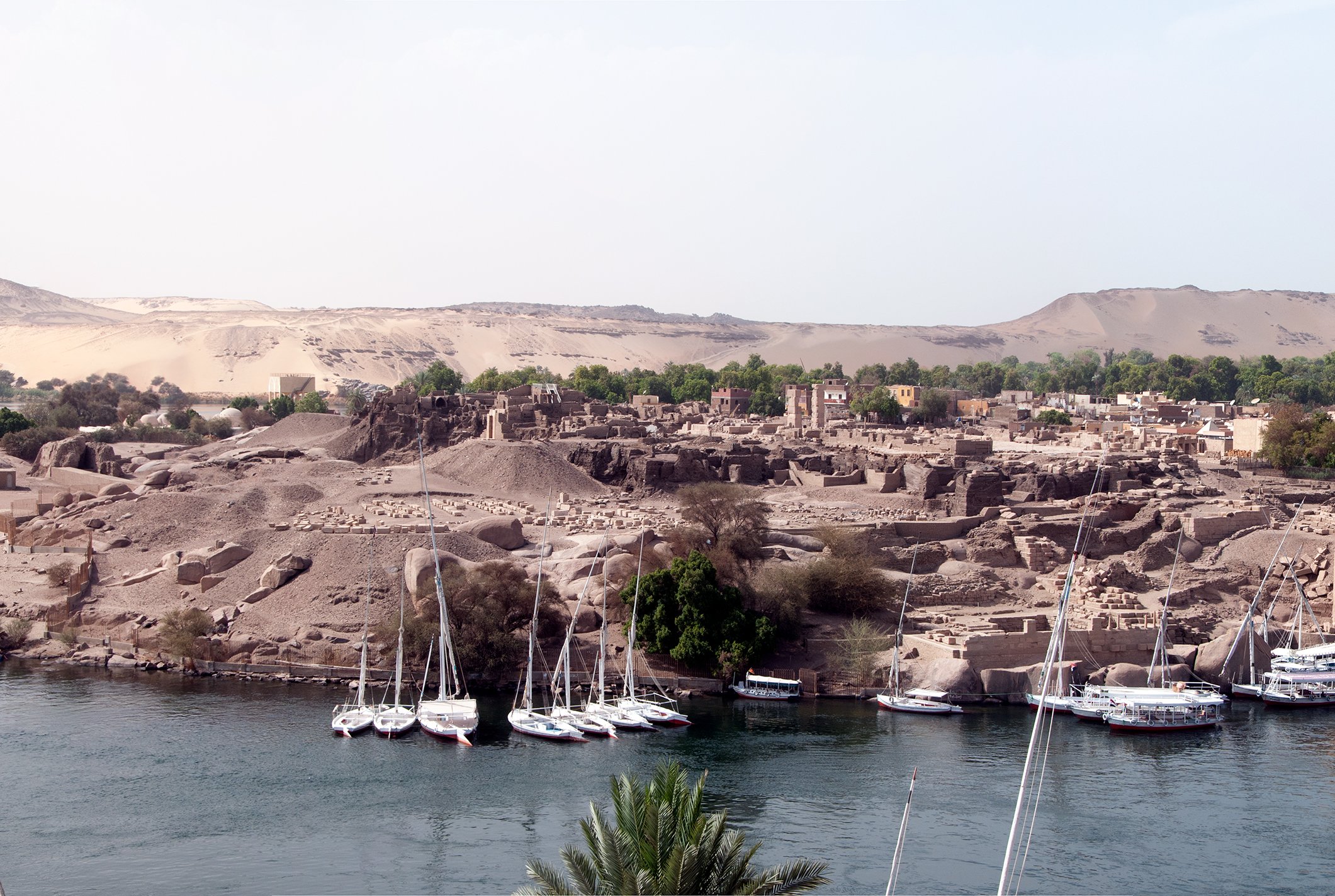
Complex settlement forms
We deal with complex forms of settlement on both the macro-level of settlement networks, spatial development and landscape history, as well as themicro-level pertaining to the reconstruction of livelihoods and sustenance, of scales of experience and competence.
Settlement processes may be considered on different scales. On the macro level, the individual settlement site is placed, regardless of its internal structure, within a larger regional context and is thus analysed from a perspectiveof its settlement area with regard to its origin and evolutional dynamics. From this chiefly landscape archaeology stance, settlement history is viewed from its interaction with an environment which is itself is subject to historical dynamics. This approach furthermore highlights the network character of settlement systems. Only with regard to such networks does the emergence of complex, multi-tiered settlement structures become visible as a characteristic of the Egyptian settlement pattern since the end of prehistory. Crucial for this level of large-scale analysis are recent developments in prospecting methods, geophysics and geo-archaeology, satellite data, as well as in GIS testing. Using this treasure trove of methods for Egyptian archaeology is of particular concern in this field of research.
The analysis of settlement sites on the micro level potentially hold just as much information. The aim here is to focus on individual, concrete livelihoods as they become manifest on a daily,idiosyncratic level. Only in this way may settlements be understood as settings for human experience and activity where concrete, historical realities of life become apparent.
Figurinen des Gottes Osiris aus ungebranntem Nilschlamm wurden unweit des Grabkomplexes des Königs Djer (1. Dynastie) deponiert. Die fragilen, polychrom dekorierten Statuetten lagen auf einer dünnen Pflanzenmatte auf. Diese Beobachtungen korrespondieren mit Herstellungs- und Rezeptangaben aus Ritualpapyri © DAI // G. Dreyer
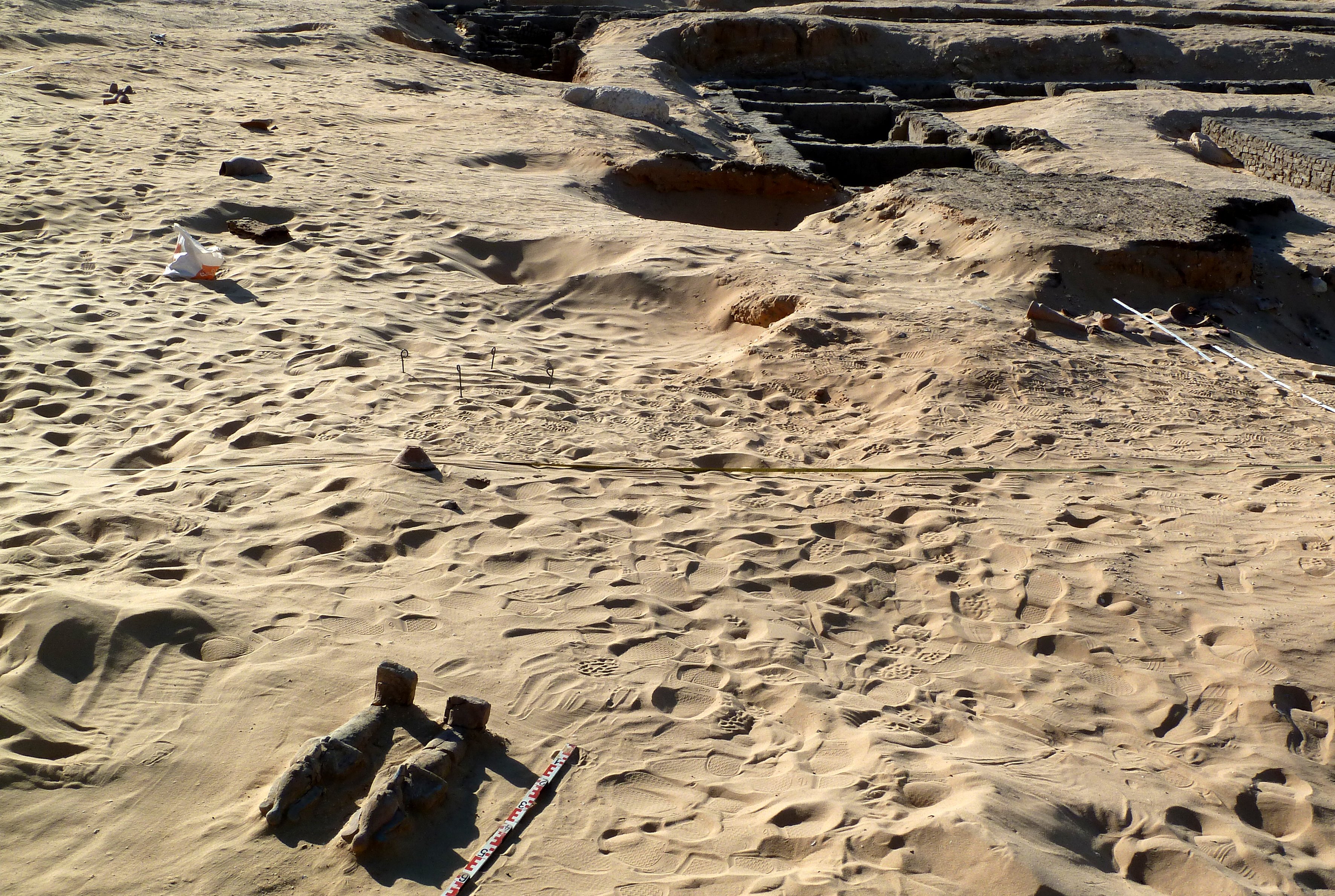
Communication in the sacred space
Our research on communication in sacred space is concerned with the reconstruction of ritual spaces, above all that of practices in ritual spaces, their media outlines and socio-political function using ritual relics, votive practices, and epigraphic sources.
Rituals, sanctuaries, and tombs traditionally stand at the centre of Egyptian archaeology, especially when it comes to the pharaonic period, and indeed the sheer extent of monumentality in sacred spaces is a specific feature of pharaonic culture. Beyond a primarily monument-related approach, analyses of the practices that once had taken place inside these venues determine sacred spaces as privileged locations of social communication. Such communication processes relative to the venues and situations in which they occurred, the media they used and, above all, the contents of the discourses discussed here, are crucial for understanding the structure and integration, structural change, and diversity of ancient societies.
Exploring communication processes within sacred spaces is closely linked to the layout and appearance of such spaces, especially with regard to the built structures and the direct testimonies of the actions performed there. In this sense,epigraphic evidence occupies a privileged position, especially the so-called secondary epigraphy.
Elephantine: In der Erforschung der Lebensbedingungen in der alten Stadt spielt der Einsatz naturwissenschaftlicher Methoden eine Schlüsselrolle © DAI // P. Kopp
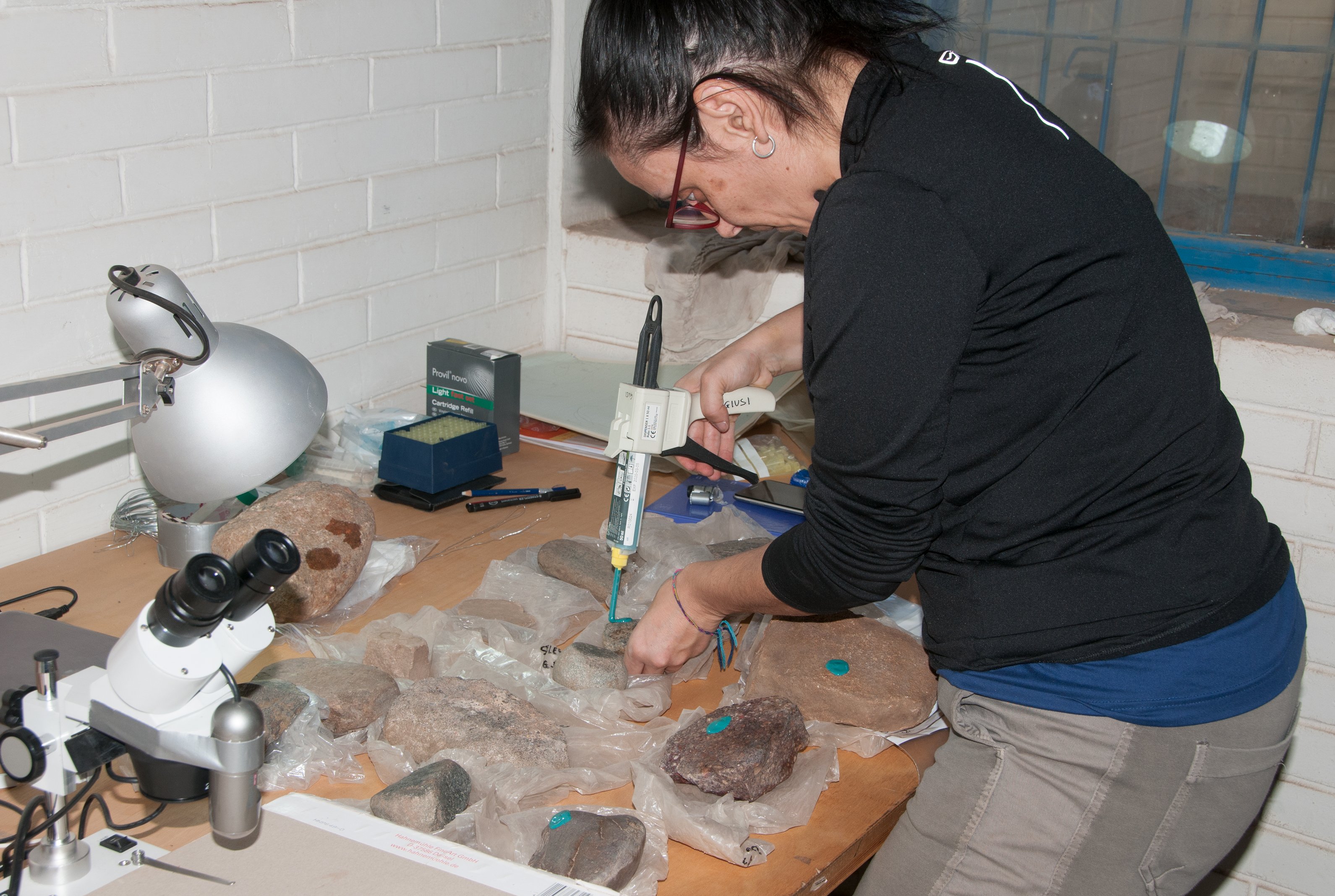
Social and cultural diversity and Egypt's unity
We study Egypt's social and cultural diversity and unity, both within the synchronous interaction between population groups of different cultures and habits (e.g. between mobile populations in the adjacent desert areas and society in the Nile Valley) and the diachronic emergence and repeated transformations of multicultural societies from the 1st millennium BC onwards, especially in the post-pharaonic periods.
Egypt, especially under the pharaohs, is widely viewed as a monolithic entity. Excessive focus on elite culture tends to eclipse the moments of social diversity; later periods, when Egypt came under ethnically and culturally foreign rule, are often viewed as no longer genuinely Egyptian. However, such ideas which tend to be taken for granted in academic and scholarly circles do no justice to the historical findings. In Egypt, groups of different ways of life, culture and socio-political organisation have always coexisted and functioned together.
This dialectic between diversity and unity over a period of six millennia is a remarkable peculiarity of Egypt's social and cultural history if compared to other cultural areas, and the department's research programme isincreasingly addressing this issue.
The research projects arrange along two lines of approach. The one pertaining to synchronicity investigates how groups of different cultures and livelihoods coexisted in functional networking. Here, the focus is on the ecological-cultural gradient between the floodplain and the adjacent desert areas. This furthermore opens the perspective on Egypt's interaction with the African continent. The diachronic approach, on the other hand, relates to processes of the political, cultural and ethnic overlapping of Egypt and asks on the basis of which framework parameters which characteristics are repeatedly produced as elements of a longue durée, and on the other hand what the social and cultural "degrees of freedom" in Egypt's situation consist of.

